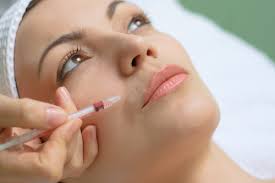
Rhinoplasty, aka…a nose job, is a plastic surgery procedure for correcting and reconstructing the form, restoring the functions, and aesthetically enhancing the nose- by resolving nasal trauma, defects or respiratory defect, as well as a previous failed primary rhinoplasty. In the surgeries — a plastic surgeon creates a functional, aesthetic, and facially proportionate nose by separating the nasal skin and the soft tissues from the nasal framework, correcting them as required for form and function, suturing the incisions, and applying either a package or a stent, or both, to immobilize the corrected nose to ensure the proper healing of the surgical incision.
The nose is made up of bone and cartilage. The size and relationship of the bone and cartilage which make up the nose determine the size and shape of the nose.
With local anesthesia, the nose and the surrounding area is numbed. The patient will usually be lightly sedated but awake during the surgery, and relaxed and insensitive to pain. The surgery is usually done through the incision inside the nostrils. Instruments inserted through the nostril, are used to reshape the bones which make up the nose.
The results of surgery are variable, depending on the initial shape of the nose, but rhinoplasty offers significant improvement in appearance in most cases.
Rhinoplasty surgery can change:
- Nose size, in relation to the other facial structures
- Nose width, at the bridge
- Nose profile, with visible humps or depressions on the bridge
- Nasal tip, that is large or bulbous, drooping, or too upturned
- Nostrils that are large, wide or upturned
- Nasal asymmetry and deviation


Dr. Bishara provides a wide range of cosmetic procedures to help patients look and feel their best. These procedures are designed to improve the appearance of the face and body through minimally invasive techniques that provide highly effective results. Many of these procedures can be combined in order to achieve your desired appearance. Please call our office at (817) 473-2120 for more information or visit our website at www.MarkBisharaMD.com.










